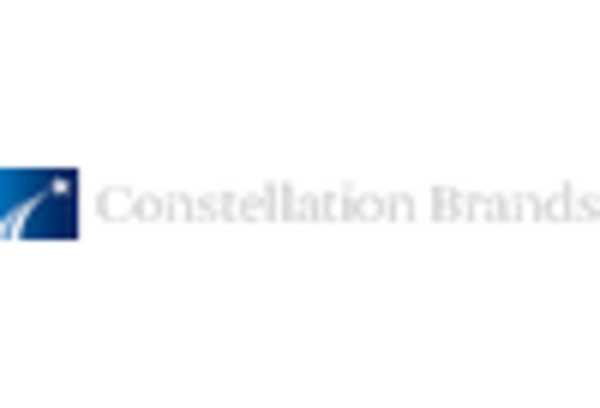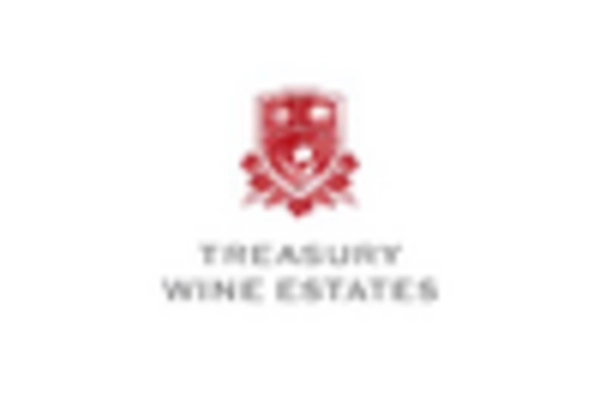Health Consciousness
Health consciousness is becoming a significant driver in the wine market, as consumers are increasingly aware of the health implications of their beverage choices. Many individuals are opting for lower-alcohol and lower-calorie wines, which aligns with broader trends in health and wellness. In 2023, sales of low-alcohol wines surged by 15%, indicating a shift towards moderation. This trend is particularly pronounced among younger consumers who prioritize health and fitness. As a result, wine producers are likely to innovate by developing products that meet these health-oriented demands, thereby influencing the overall dynamics of the wine market.
Increased Wine Tourism
Wine tourism is emerging as a vital driver for the wine market, particularly in regions known for their vineyards. The US has seen a rise in wine tourism, with visitors seeking immersive experiences such as vineyard tours, tastings, and wine festivals. This trend not only boosts local economies but also enhances brand visibility for wineries. In 2023, wine tourism contributed an estimated $3 billion to the US economy, highlighting its significance. As more consumers engage with wine culture through travel, wineries are likely to invest in marketing strategies that promote their unique offerings, thereby influencing the overall growth of the wine market.
Changing Consumer Preferences
The wine market in the US is experiencing a notable shift in consumer preferences, particularly among younger demographics. Millennials and Generation Z are increasingly favoring unique and artisanal wines, which has led to a rise in demand for small-batch producers. This trend is reflected in the growing popularity of natural and organic wines, which accounted for approximately 10% of total wine sales in 2023. As consumers become more discerning, they seek wines that offer distinct flavors and stories, driving innovation within the wine market. This evolving landscape suggests that producers must adapt their offerings to cater to these preferences, potentially impacting pricing strategies and marketing approaches.
Regulatory Changes and Trade Policies
Regulatory changes and trade policies are increasingly impacting the wine market in the US. Recent adjustments in tariffs and import regulations have created both challenges and opportunities for domestic producers. For instance, changes in import duties on foreign wines can affect pricing strategies and market competition. Additionally, state-level regulations regarding distribution and sales continue to evolve, influencing how wines are marketed and sold. These regulatory dynamics necessitate that producers remain agile and informed, as compliance and strategic adaptation will be crucial for success in the competitive landscape of the wine market.
Technological Advancements in Production
Technological advancements are playing a crucial role in shaping the wine market, particularly in the US. Innovations in vineyard management, fermentation processes, and quality control are enhancing the efficiency and quality of wine production. For instance, the adoption of precision viticulture techniques allows winemakers to monitor and manage vineyard conditions more effectively, leading to improved grape quality. This technological evolution not only boosts productivity but also enables producers to create wines that cater to specific consumer preferences. As these technologies become more accessible, they are likely to transform the competitive landscape of the wine market, fostering a new era of quality and innovation.

















Leave a Comment